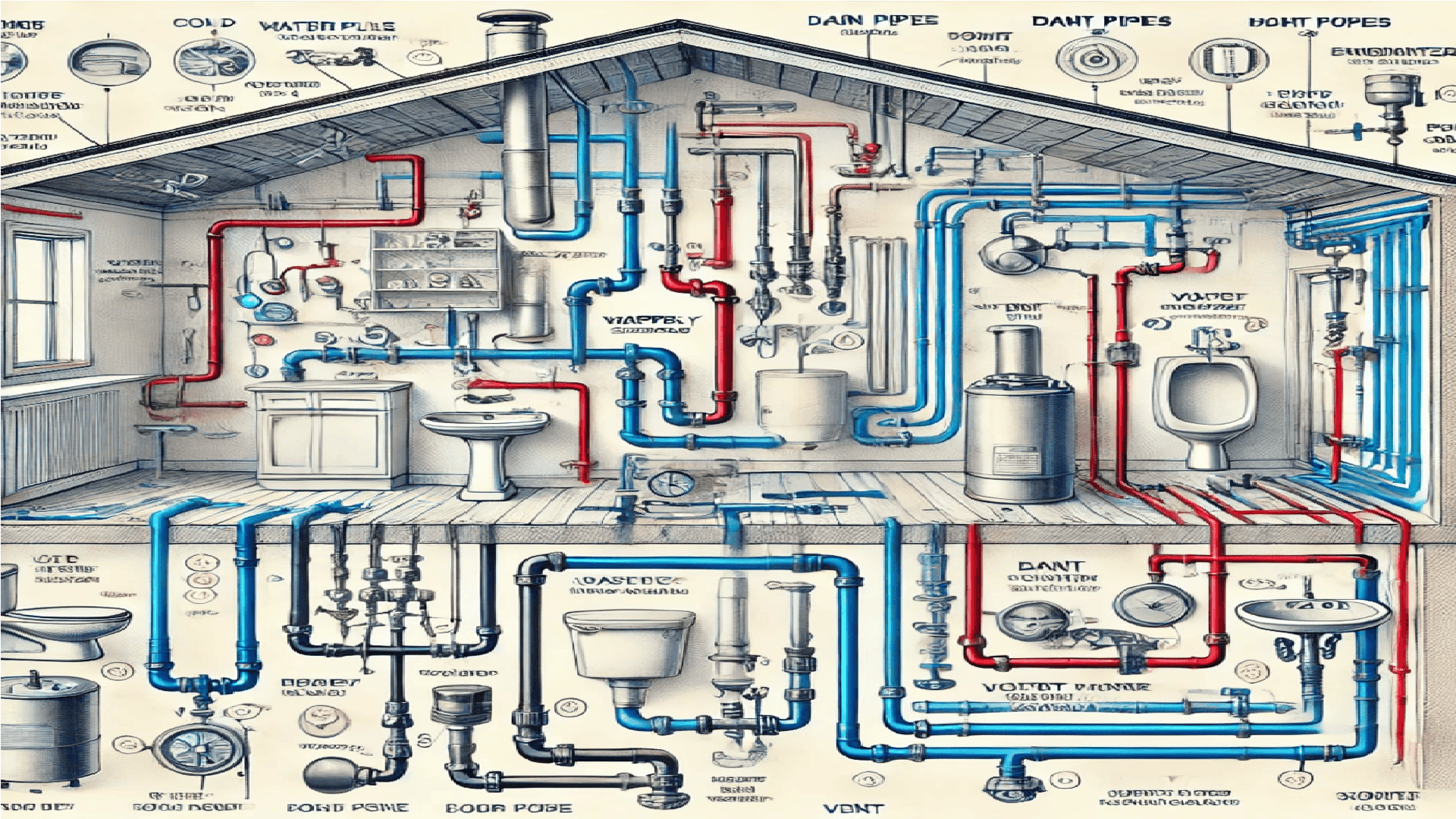Image made by ChatGpt
Introduction
Plumbing is a vital component of any home, providing clean water and removing wastewater. Whether you’re upgrading fixtures or replacing old pipes, understanding the basics of home plumbing can help you make informed decisions and avoid costly mistakes. In this guide, we’ll cover the essentials of residential plumbing and help you choose the best plumbing pipes for your specific needs.
Plumbing Basics: How Home Plumbing Systems Work
A typical home plumbing system consists of two main subsystems:
-
Water Supply System
-
Delivers clean, pressurized water from a municipal source or well.
-
Includes pipes, valves, and fittings that direct water to sinks, toilets, showers, and appliances.
-
Often features a water heater for supplying hot water.
-
-
Drainage System
-
Uses gravity to remove wastewater through drainpipes into the sewer or septic system.
-
Includes vents to allow airflow and traps (U-shaped pipes) to block harmful sewer gases.
-
Understanding these components helps you identify common problems like slow drainage, leaks, or poor water pressure—critical for DIY maintenance or communicating with a plumber.
6 Common Types of Home Plumbing Pipes (With Pros and Cons)
Choosing the right plumbing pipe depends on durability, cost, use case, and installation ease. Here are six commonly used pipe types in residential plumbing:
1. PVC (Polyvinyl Chloride) Pipes
Best for: Drainage and waste lines
-
✅ Lightweight and easy to cut and install
-
✅ Resistant to corrosion
-
❌ Not recommended for hot water lines (can warp at high temperatures)
2. PEX (Cross-linked Polyethylene) Pipes
Best for: Hot and cold water supply lines
-
✅ Flexible, easy to route through walls
-
✅ Highly resistant to freezing and bursting
-
❌ Not UV-resistant (unsuitable for outdoor use)
3. Copper Pipes
Best for: Long-lasting hot and cold water supply
-
✅ Extremely durable and corrosion-resistant
-
✅ Bacteria-resistant
-
❌ More expensive and requires soldering
4. Galvanized Steel Pipes
Best for: Older home systems (now mostly outdated)
-
✅ Strong and durable
-
❌ Prone to rust and mineral buildup
-
❌ Rarely used today due to better alternatives
5. CPVC (Chlorinated Polyvinyl Chloride) Pipes
Best for: Hot and cold water
-
✅ Can handle high temperatures
-
✅ Corrosion-resistant
-
❌ Slightly more expensive than standard PVC
6. Cast Iron Pipes
Best for: Sewer lines and main drains
-
✅ Extremely durable and sound-dampening
-
✅ Excellent for large drainage systems
-
❌ Heavy, costly, and harder to install
-
❌ Mostly replaced by PVC in modern homes
How to Choose the Right Plumbing Pipe for Your Home
When selecting the best type of pipe, consider the purpose, budget, and expected lifespan of your system:
| Purpose | Recommended Pipes |
|---|---|
| Water Supply | PEX, Copper, CPVC |
| Drainage & Wastewater | PVC, Cast Iron |
| Budget-Friendly | PVC, PEX |
| High Durability | Copper, Cast Iron |
Tip: Always check your local building codes and consult a licensed plumber before starting any major plumbing work.
Final Thoughts
Understanding the basics of home plumbing empowers you to make smart, cost-effective choices—whether you’re doing a small DIY fix or a full-scale renovation. By choosing the right plumbing pipes and materials, you’ll ensure a long-lasting, efficient system. When in doubt, consult a plumbing professional to protect your investment and avoid future issues.




Comments are closed